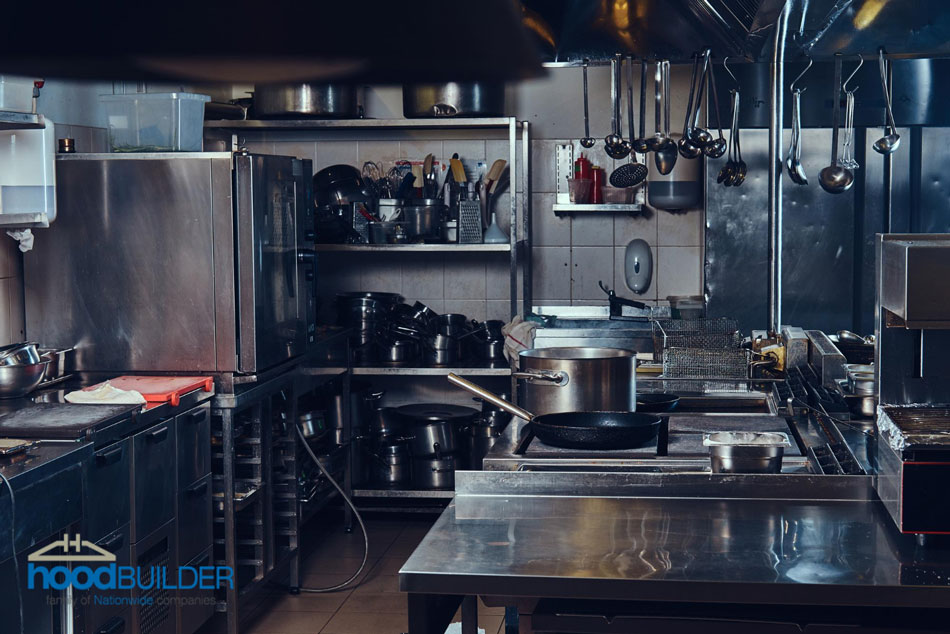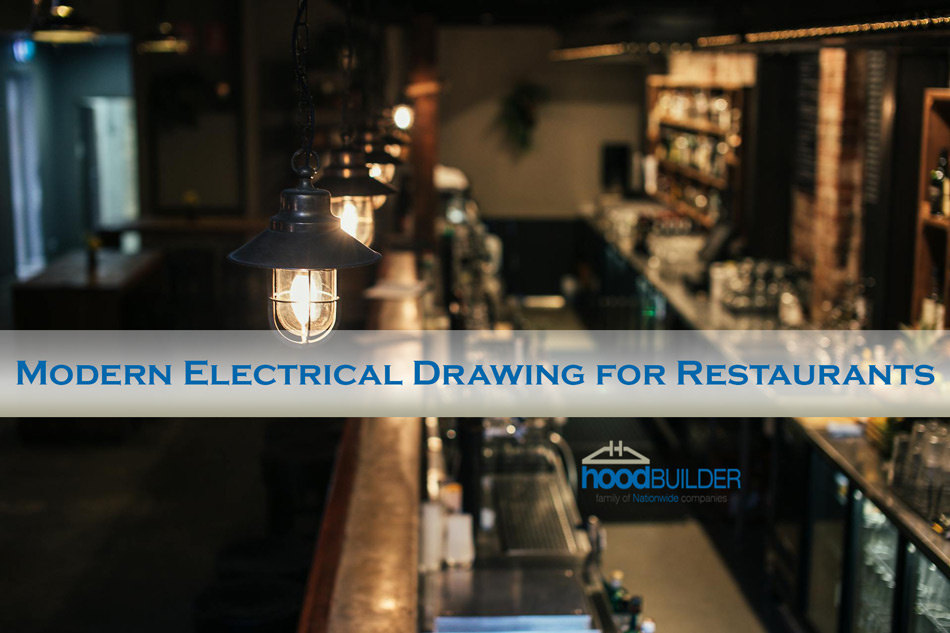Welcome to our comprehensive guide on modern electrical drawing for restaurants. In today’s fast-paced world, restaurants rely heavily on advanced electrical systems to ensure efficient operations and create a safe environment for both staff and customers. Proper electrical planning and design play a crucial role in optimizing energy usage, reducing costs, and complying with safety regulations. In this blog post, we will delve into the key aspects of modern electrical drawing for restaurants, providing valuable insights and practical tips for designing an electrical system that meets the unique needs of your restaurant.
Need help providing the best electrical drawing for your retaurant? Don’t hesitate to call 303-777-7720 to receive a free quote
Tips for Having Modern Efficient Electrical Drawing in a Restaurant
Understanding the Importance of Electrical Drawing in Restaurants
Elaborate on the potential consequences of a poorly designed electrical system in a restaurant. Discuss how inadequate power distribution can lead to frequent circuit trips, downtime, and disruption of service, negatively impacting customer satisfaction. Emphasize the importance of safety in a restaurant environment, highlighting how electrical drawing helps identify potential hazards and ensures compliance with electrical codes and regulations. Discuss the role of electrical drawings in facilitating efficient troubleshooting and maintenance of the electrical system.
Assessing Power Requirements and Load Calculations
Provide more examples of specific electrical loads in a restaurant, such as ovens, grills, fryers, refrigerators, HVAC systems, and audiovisual equipment. Explain how to calculate the power requirements for each appliance or area by considering factors such as voltage, current, and power factor. Discuss the concept of diversity factor and how it impacts load calculations in restaurant settings. Provide practical tips on estimating future power needs to accommodate potential expansions or equipment upgrades.
Designing the Electrical Layout
Expand on the considerations for each area of the restaurant. In the kitchen, discuss the importance of separate circuits for different equipment, such as cooking appliances, food processors, and dishwashers, to ensure optimal performance and prevent overloading. Explain the concept of dedicated circuits for critical equipment and the benefits of GFCI (Ground Fault Circuit Interrupter) outlets to enhance electrical safety. In the dining area, elaborate on the placement of power outlets near seating areas for customer convenience and the use of dimmable lighting to create ambiance. Discuss the electrical requirements for audio systems and point-of-sale terminals in the bar area.
Selecting Appropriate Wiring and Cabling
Provide more details about the advantages and limitations of different wiring types. Discuss the importance of considering factors such as cost, flexibility, and environmental conditions when selecting wiring materials. Explain how to choose the appropriate wire size based on the ampacity and voltage drop calculations. Elaborate on the benefits of conduit systems, such as PVC or metal conduits, in providing additional protection for wiring and facilitating future modifications. Discuss the importance of proper grounding and bonding techniques to prevent electrical shocks and ensure equipment safety.
Ensuring Electrical Safety and Compliance
Expand on the importance of regular inspections and maintenance to ensure ongoing electrical safety. Discuss the need for periodic testing of electrical systems, including ground fault circuit interrupters (GFCIs) and arc fault circuit interrupters (AFCIs). Explain the role of electrical panels as the central distribution point for power and the importance of properly labeling circuits for easy identification. Discuss the significance of compliance with electrical codes and regulations, such as the National Electrical Code (NEC) or local building codes, to ensure a safe and legally compliant electrical system.
Incorporating Energy-Efficient Solutions
Provide more examples of energy-efficient solutions beyond lighting and HVAC. Discuss the benefits of energy-efficient appliances, such as ENERGY STAR-certified equipment, which can significantly reduce energy consumption and operational costs. Explain the advantages of motion sensors and timers for controlling lighting in less frequently used areas, such as storage rooms or restrooms. Discuss the potential for renewable energy integration, such as solar panels, to offset electricity consumption and reduce the restaurant’s carbon footprint.
The Role of Technology in Modern Electrical Drawings
Discuss emerging technologies that can further enhance the electrical drawing process. Explain how virtual reality (VR) or augmented reality (AR) tools can provide immersive experiences for visualizing electrical designs and identifying potential clashes or design issues. Discuss the benefits of cloud-based collaboration platforms that enable real-time collaboration between designers, engineers, and contractors, facilitating seamless communication and reducing project delays. Highlight the importance of ongoing training and upskilling to leverage the full potential of these technological advancements.
Examples of Energy-Efficient Appliances Commonly Used in Restaurants

Energy-Efficient Refrigerators and Freezers
Look for appliances with the ENERGY STAR certification, which indicates they meet strict energy efficiency guidelines. These units are designed with features such as improved insulation, high-efficiency compressors, and better temperature management systems to reduce energy consumption.
Induction Cooktops
Induction cooktops use electromagnetic fields to heat the cookware directly, resulting in faster and more precise cooking while minimizing energy loss. They are more energy-efficient compared to traditional gas or electric cooktops because they heat up quickly and provide instant heat adjustments.
Energy-Efficient Dishwashers
ENERGY STAR-certified dishwashers are designed to use less water and energy while still providing effective cleaning. They incorporate features such as soil sensors, efficient spray arms, and water-saving options to minimize resource consumption.
Convection Ovens
Convection ovens use fans to circulate hot air, resulting in faster and more even cooking. They can reduce cooking times and energy consumption compared to conventional ovens. Look for models with energy-saving features like programmable timers and low-power standby modes.
Energy-Efficient Ventilation Hoods
Ventilation hoods with energy-efficient motors, LED lighting, and variable speed controls can significantly reduce energy usage while effectively removing cooking odors, grease, and smoke from the kitchen area.
High-Efficiency Water Heaters
Restaurants typically require large quantities of hot water, making energy-efficient water heaters crucial. Consider tankless water heaters or high-efficiency models that use advanced heat exchangers or condensing technology to minimize energy waste.
Energy-Efficient Ice Machines
Ice machines with high energy efficiency ratings use advanced insulation, efficient compressors, and improved ice-making technologies to reduce energy consumption while maintaining ice production capacity.
Low-flow faucets and Pre-Rinse Spray Valves
Installing low-flow faucets and pre-rinse spray valves can significantly reduce water consumption in kitchen areas. These fixtures are designed to provide sufficient water pressure while using less water compared to traditional counterparts.
Energy-Efficient Exhaust Fans
Upgrading to energy-efficient exhaust fans with advanced motor technology, variable speed controls, and demand-based ventilation can optimize ventilation while reducing energy usage.
Energy-Efficient Coffee Machines
Look for coffee machines designed with energy-saving features like programmable timers, automatic shut-off, and energy-efficient heating elements. These machines can help reduce energy consumption during non-peak hours.
Energy-Efficient Fryers
Energy-efficient fryers incorporate features like improved insulation, high-efficiency burners, and advanced oil filtration systems. These features help optimize heat transfer, reduce energy waste, and extend the lifespan of the frying oil.
Energy-Efficient Grills and Charbroilers
Look for grills and charbroilers with energy-efficient burners, adjustable heat zones, and improved insulation. These features help minimize heat loss and ensure precise cooking while conserving energy.
Energy-Efficient Steamers
Steamers with energy-efficient design elements, such as high-efficiency heating elements and improved insulation, can provide significant energy savings compared to traditional models. Look for steamers that optimize steam production and distribution while minimizing energy loss.
Energy-Efficient Food Warmers
Food warmers with insulated compartments, precise temperature controls, and energy-saving features like timers and automatic shut-off can help reduce energy consumption while keeping food at optimal serving temperatures.
Energy-Efficient Beverage Dispensers
Beverage dispensers, such as coffee urns or hot water dispensers, designed with energy-saving features like insulated containers, efficient heating elements, and programmable settings, can help minimize energy usage during beverage service.
Energy-Efficient Ventless Cooking Equipment
Ventless cooking equipment, such as ventless fryers or combination ovens, can eliminate the need for traditional ventilation systems, resulting in energy savings and reduced installation costs. These appliances use advanced filtration systems to capture grease, smoke, and odors, improving indoor air quality.
Energy-Efficient Commercial Microwaves
Look for commercial microwaves with energy-saving features like programmable power levels, efficient cooking sensors, and standby modes. These features help reduce energy consumption during idle periods while maintaining quick and efficient cooking capabilities.
Energy-Efficient Commercial Blenders
Blenders with high-powered motors and energy-efficient designs can blend ingredients quickly while minimizing energy usage. Look for models with advanced motor technology and blending settings optimized for energy efficiency.
Energy-Efficient Display Cases
Display cases with energy-efficient LED lighting, low-emissivity glass, and advanced temperature control systems can showcase food products while minimizing energy consumption. These features help maintain optimal product visibility and freshness while reducing energy waste.
Energy-Efficient Vending Machines
If your restaurant has vending machines, consider energy-efficient models that incorporate features like LED lighting, advanced cooling systems, and programmable energy-saving modes. These machines can reduce energy consumption while providing convenient access to snacks and beverages.
It’s essential to consider the specific needs and requirements of your restaurant when selecting energy-efficient appliances. Look for products that are ENERGY STAR certified or have other energy efficiency ratings to ensure their performance and energy-saving capabilities are independently verified. Additionally, consult with appliance manufacturers or suppliers who can provide detailed information about the energy efficiency features and benefits of their products.
Looking for Energy-Efficient Restaurants in Denver, CO?
In the conclusion, reiterate the key points from each section and their overall importance in designing a safe, efficient, and compliant electrical system for restaurants. Emphasize the need for collaboration between restaurant owners, designers, and electrical professionals to ensure the best possible outcomes. Encourage readers to stay informed about the latest advancements in electrical technology and design practices to continuously improve their restaurant’s electrical infrastructure.
At HoodBuilder, we offer an efficient plan for your restaurants, with the care and attention that we know your establishment needs. So don’t hesitate to contact us at 303-777-7720, and receive the best electrical drawing from our team of professionals.

